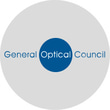- OT
- Professional support
- Clinical and regulatory
- Listening to the public
Listening to the public
The GOC's head of policy and research, David Rowland, explains why the transition towards a more automated future in the delivery of eye care offers opportunities for optical practice, as long as it is handled carefully

28 February 2018
Over the past few years the optical sector has seen many advances in new technology. As the regulator, we need to be aware of these technological developments, but also of the views and experiences of members of the public across the UK.
In our latest annual survey, members of the public were asked about scenarios that may occur in the future, in which machines and automation play a greater role in testing sight.
The survey found that 48% of respondents would be uncomfortable having a sight test conducted by a machine without an optician present, but 43% would be comfortable. The research also found a noticeable demographic split with 55% of those aged 16–34 being comfortable with no optician present, while only 23% of those aged 75+ being comfortable.
As is evident from our research, the transition towards a more automated future in the delivery of eye care will need to be handled very carefully, particularly with an ageing population who are less likely to be comfortable with less human interaction. We have a duty to be aware of any public protection issues that might arise – for example the risks from more remote diagnosis and treatment of patients. Ultimately, we must ensure that our regulation of the sector is flexible enough to allow the technological advancement that will benefit patients and the public.
"We must ensure that our regulation of the sector is flexible enough to allow the technological advancement that will benefit patients and the public"
Public perceptions
Where automation does replace the work traditionally undertaken by an optician there are also opportunities for optical practise. Automation in eye care has the potential to free up practitioners' time to allow them to focus on managing more complex eye care conditions and expand their scope of practice. Our ongoing Education Strategic Review will be key to ensuring that practitioners are equipped to handle such a change.
The research also showed some consistent themes from past years. A total of 95% of people reported being happy with their overall experience of visiting their optician, which is a testament to the hard work and professionalism throughout the optical professions.
But it again showed that public knowledge of what GOC registrants can do lags behind the reality. Only 24% of people would visit their optician first if they woke up with an eye problem – a low figure, although it does represent an increase from 19% in 2015. And the figure was higher in the devolved nations of the UK, where enhanced services are more widely commissioned, than it was in England.
Also, people are still more likely to consider themselves to be a customer (39%) than a patient (29%) when visiting their optician (29% consider themselves to be both). This reflects the way that many members of the public continue to view optometrists and dispensing opticians as retailers rather than healthcare practitioners, with a focus group of glaucoma patients expressing similar sentiments.
The full research is available on the GOC’s website.
Image credit: Getty
Advertisement


Comments (0)
You must be logged in to join the discussion. Log in